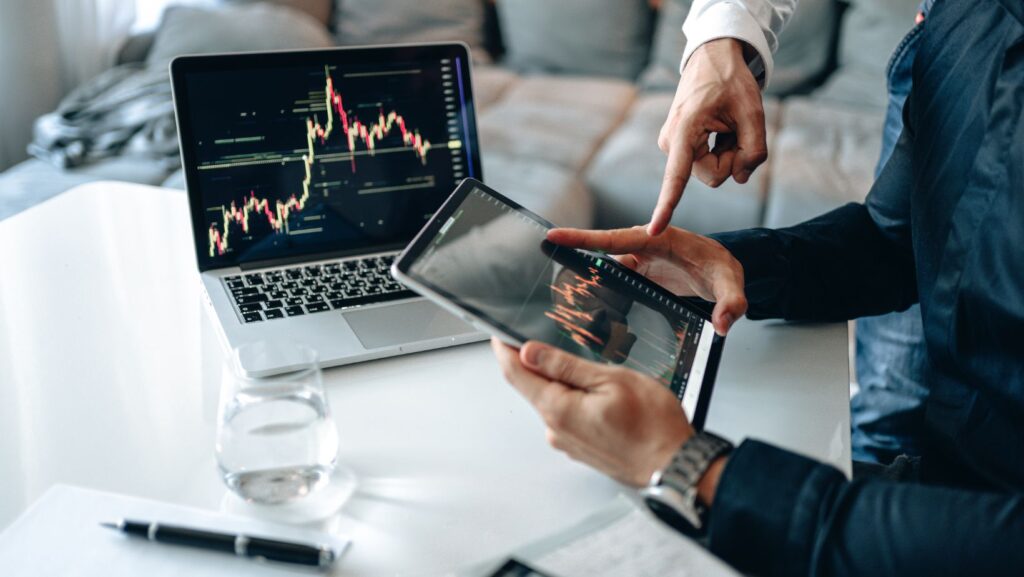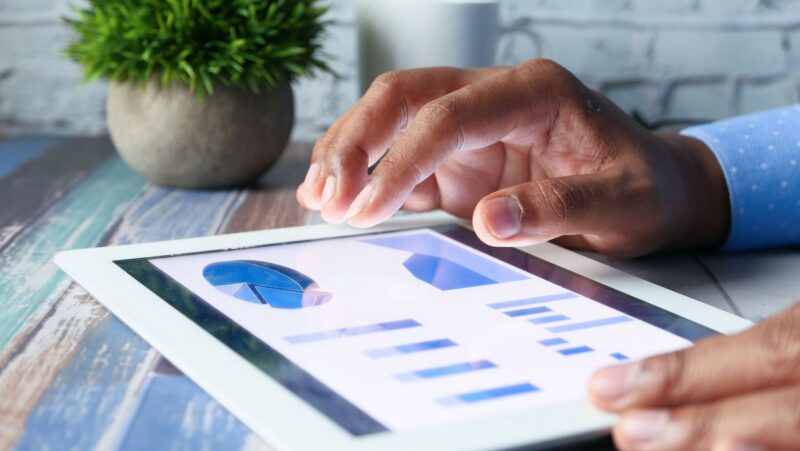
In the high-stakes world of day trading, the tools traders rely on are constantly evolving. From traditional indicators like moving averages and Bollinger Bands, the landscape is shifting towards more sophisticated, AI-driven tools.
Today, artificial intelligence isn’t just a buzzword; it’s a game-changer in the world of day trading. As the market becomes more volatile and unpredictable, AI’s predictive capabilities are proving to be invaluable.
This article delves into the evolution of day trading indicators, tracing the journey from traditional methods to the current AI-dominated scene. It’s a glimpse into how technology is reshaping the way we trade, offering insights and opportunities like never before.
The Early Days of Day Trading: Traditional Indicators
In the onset of day trading, traders relied heavily on traditional indicators. Price charts, oscillators, and moving averages – these were the bedrock of a day trader’s toolbox. They assisted in determining potential buy and sell signals in the market. For instance, Bollinger Bands provided a relative definition of high and low prices.
Another popular tool, Stochastics, involved a momentum oscillator. Traders used it to compare a particular closing price to a range of prices over a certain period. A shift in momentum often preceded changes in price, making it invaluable for traders. Similarly, Moving Averages, both simple and exponential, smoothed out price data to help traders better identify the trend direction.
Despite their effectiveness, these traditional indicators posed a challenge. They required a significant amount of manual analysis which, considering the market’s fast-paced nature, often resulted in missed opportunities. Moreover, these indicators possessed a reactive character, only providing insights based on past market trends and data. This, in turn, made prediction or futuristics analysis difficult under rapidly changing market conditions.

These early days laid the foundation for the evolution of day trading indicators, paving the way for artificial intelligence to revolutionize the industry. AI tools, with their predictive capabilities, are modifying the landscape of day trading, thus changing the rules of the game entirely.
The Shift to Digital: Incorporating Technology in Trading
With the rapid advent of technology, traders began utilizing digital platforms to streamline their practices, banishing time-consuming manual analysis. The rise of online brokerages offered an array of sophisticated and real-time market data, catalyzing the transition to digital trading. Bloomberg terminal, a powerful tool, provides traders with real-time financial data, news feeds, and messages. It’s an instance of how technology transformed trading, offering a reservoir of information at traders’ fingertips.
However, the sheer volume of data generated posed a unique challenge. How could one extract relevant insights from this ocean of information? This pressing question led to the development of algorithmic trading. Algorithms, designed to follow specific trading instructions, offered an efficient way to execute large orders and reduce market impact.

Subsequently, the technological landscape shifted dramatically with the entry of artificial technology (AI). AI-based tools, unlike traditional ones (Bollinger Bands, Stochastics), identify market mood swings and obscure patterns. They provide future predictions, adapting to evolving market conditions. Algorithms driven by machine learning (ML) and neural networks swiftly recognize patterns and forecast possible price movements, offering a valuable edge to traders in a competitive market. Traders have now adopted AI as an integral part of day trading, symbolizing a significant shift from traditional to digital trading tools.
The AI Revolution: Modern Day Trading Indicators
Commencing the AI revolution, modern day trading indicators signify a considerable leap from historical trade tools. A trader’s arsenal now boasts tools that incorporate machine learning and AI tools, offering predictive capabilities instead of mere reactive maneuvers. For instance, platforms utilizing AI observe, learn, and analyze market patterns – a shift from traditionally relying purely on past data. These AI-based indicators uniquely adapt themselves to market changes, refining their predictions over time.
The integration of real-time data access and AI capabilities saw the emergence of robo-advisors. Developed with the traders’ interests at heart, robo-advisors systematically analyze market conditions and execute trades accurately, efficiently, and faster than human traders. As an example, prominent robo-advisors like Betterment, Wealthfront, and Schwab Intelligent Portfolios have transformed the landscape of day trading. They provide personalized investment advice, ensuring traders maximize profits while mitigating risk.

Furthermore, AI’s development in trading extends to the creation of predictive algorithms. These intelligent tools prioritize accuracy and speed, processing vast amounts of data quicker than any human, yielding an efficient decision-making framework. Predictive algorithms, such as Google’s DeepMind or IBM’s Watson, exemplify AI’s benefits in day trading, enabling traders to anticipate market trends and react swiftly.
In essence, the advent of AI in day trading led to the development of advanced trading tools. Recognizing traders’ dependency on these AI-powered tools, it’s clear the AI revolution has established a new norm away from traditional day trading indicators.
Embracing the Future of Day Trading
The evolution of day trading indicators from traditional tools to AI-powered solutions marks a significant leap in the trading landscape. Traditional indicators have served their purpose but their limitations in a fast-paced, data-driven market have become increasingly apparent. The introduction of technology, particularly AI, has transformed the way traders analyze and respond to market trends. It’s clear that AI’s predictive capabilities and adaptability to changing market conditions offer a more proactive approach to day trading.
Modern indicators, powered by machine learning and AI, are leading the way in predictive analysis. Robo-advisors are efficiently executing trades while predictive algorithms are swiftly anticipating market trends. This shift signifies a new norm in day trading, moving away from a reactive approach based on historical data to a more proactive one, utilizing real-time data and AI. Embrace the future of day trading – it’s here and it’s AI-powered.










